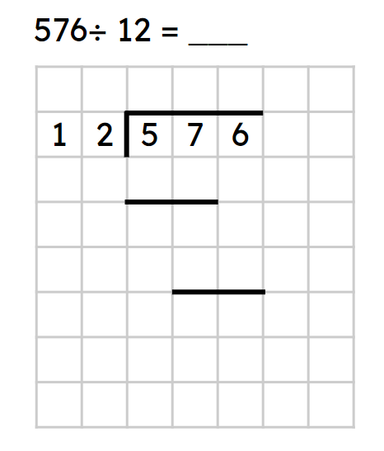Myths about teaching can hold you back
- Year 6
Using short and long division to divide by a 2-digit divisor
I can use short and long division to divide by a 2-digit divisor.
- Year 6
Using short and long division to divide by a 2-digit divisor
I can use short and long division to divide by a 2-digit divisor.
These resources were made for remote use during the pandemic, not classroom teaching.
Switch to our new teaching resources now - designed by teachers and leading subject experts, and tested in classrooms.
Lesson details
Key learning points
- Long division records the subtraction as a calculation underneath the dividend.
- Long division records the regrouping alongside the subtraction.
- There are similarities and differences between long and short division.
Keywords
Estimate - Estimate means to find a value that is close enough to the right answer, usually with some thought or calculation involved.
Long division - Long division is a method used for dividing large numbers by breaking the number down into smaller groups.
Remainder - A remainder is an amount left after a division.
Common misconception
Pupils may not unitise when using long division and make errors (e.g. when dividing 7 hundreds by 12).
Explain to pupils that they are looking for multiples of the divisor (1 hundred × 12 = 1,200). This becomes clearer when dividing the tens digits (6 tens × 12 = 72 tens).
To help you plan your year 6 maths lesson on: Using short and long division to divide by a 2-digit divisor, download all teaching resources for free and adapt to suit your pupils' needs...
To help you plan your year 6 maths lesson on: Using short and long division to divide by a 2-digit divisor, download all teaching resources for free and adapt to suit your pupils' needs.
The starter quiz will activate and check your pupils' prior knowledge, with versions available both with and without answers in PDF format.
We use learning cycles to break down learning into key concepts or ideas linked to the learning outcome. Each learning cycle features explanations with checks for understanding and practice tasks with feedback. All of this is found in our slide decks, ready for you to download and edit. The practice tasks are also available as printable worksheets and some lessons have additional materials with extra material you might need for teaching the lesson.
The assessment exit quiz will test your pupils' understanding of the key learning points.
Our video is a tool for planning, showing how other teachers might teach the lesson, offering helpful tips, modelled explanations and inspiration for your own delivery in the classroom. Plus, you can set it as homework or revision for pupils and keep their learning on track by sharing an online pupil version of this lesson.
Explore more key stage 2 maths lessons from the Multiplying and dividing by 2-digit numbers unit, dive into the full primary maths curriculum, or learn more about lesson planning.

Equipment
Licence
Prior knowledge starter quiz
6 Questions
Q1.Match the key words to their definitions
The amount that you want to divide.
The number we divide by.
The result after division has taken place.
Q2.Use 27 × 3 = 81 to calculate 27 × 6 =
Q3.Calculate 840 ÷ 7 =
Q4.Which expression could help to solve this problem?
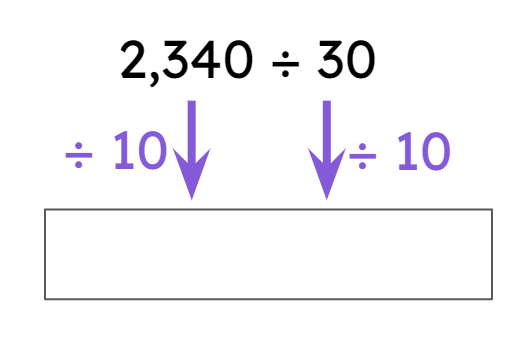
Q5.Which expressions could you use to solve this problem? Some tomatoes have a total mass of 1.44 kg. Each tomato has a mass of 80 g. How many tomatoes are there altogether?
Q6.Sam’s mum takes part in an 2.7 km swimming race. She swims 60 m in one minute. How long will it take her to complete the race? minutes.
Assessment exit quiz
6 Questions
Q1.Match the multiplication equations to related division facts.
120 ÷ 10 = 12
24 ÷ 2 = 12
48 ÷ 4 = 12
240 ÷ 20 = 12
288 ÷ 24 = 12
Q2.Which part of the equation is written above the division frame?
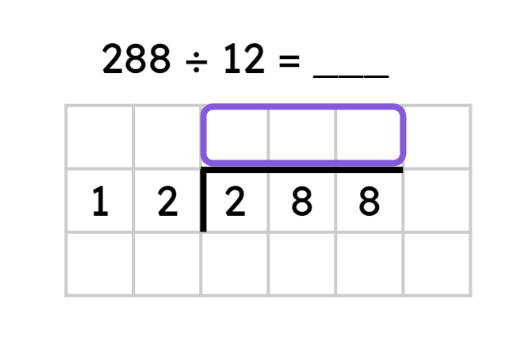
Q3.How many hundreds have been regrouped?
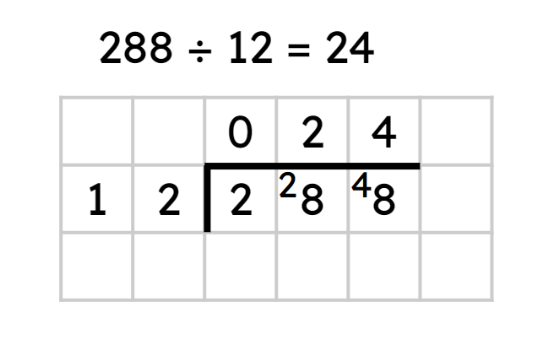
Q4.What is the missing digit in this short division?
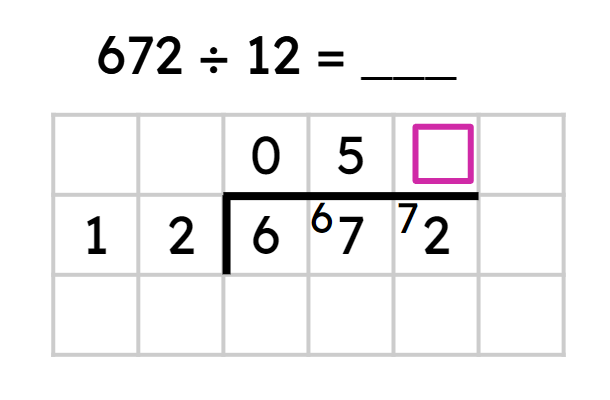
Q5.Which of the following is a reasonable estimate for the following equation. 576 ÷ 12 =
Q6.Calculate the equation using long division. 576÷ 12 =
